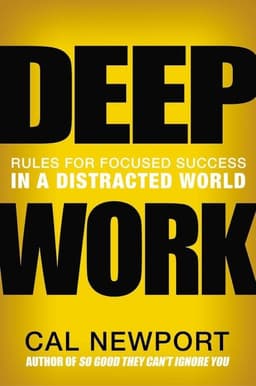
Deep Work Book Summary
Rules for Focused Success in a Distracted World
Book by Cal Newport
Feeling Lazy?Read 1 Minute Summary
Summary
In "Deep Work", Cal Newport argues that the ability to focus intensely on cognitively demanding tasks is becoming increasingly rare yet increasingly valuable in our economy, and provides a training regimen to cultivate this skill through the application of four rules: work deeply, embrace boredom, quit social media, and drain the shallows.
Sign in to rate
Average Rating: 5
Deep Work Is Valuable In Today's Economy
In Chapter 1, the author argues that the ability to perform deep work is becoming increasingly valuable in our economy at the same time that it is becoming increasingly rare. He defines deep work as professional activities performed in a state of distraction-free concentration that push your cognitive capabilities to their limit. These efforts create new value, improve your skill, and are hard to replicate.
With technological and societal changes, the ability to quickly learn hard things and produce at an elite level are critical skills. Shallow work, which is non-cognitively demanding and often performed while distracted, is becoming less valuable. The author provides several examples of highly successful individuals who have leveraged deep work to stand out in a cognitively demanding world.
Section: 1, Chapter: 1
"The Ability To Quickly Master Hard Things Is Crucial For Thriving"
"If you can't learn, you can't thrive. To learn requires intense concentration. If you're comfortable going deep, you'll be comfortable mastering the increasingly complex systems and skills needed to thrive in our economy. If you instead remain one of the many for whom depth is uncomfortable and distraction ubiquitous, you shouldn't expect these systems and skills to come easily to you."
Section: 1, Chapter: 1
Adam Grant's Example Shows The Power Of Depth Over Busyness
Adam Grant, the youngest full professor at Wharton, published seven peer-reviewed articles in top journals in one year, an impressive feat in his field. Rather than working more hours than his peers, he consolidates his deep work into intense and uninterrupted pulses.
By maximizing his intensity when he works, he maximizes the results he produces per unit of time. Grant's approach of shutting himself off from the outside world to concentrate fully supports the idea that the type of work that optimizes performance is deep work. If you're not comfortable with depth, you'll struggle to achieve your peak performance.
Section: 1, Chapter: 1
High-Quality Work Produced = (Time Spent) x (Intensity of Focus)
The author proposes a formula to conceptualize the power of depth in producing valuable output. Your ability to produce high-quality work is a function of the time you spend and the intensity of your focus during this time. Maximizing both time and intensity will increase the quality and quantity of your output. This supports the practice of working deeply while avoiding distractions, as it allows you to maximize your intensity and results per unit of time worked.
Section: 1, Chapter: 1
Flow Generates Happiness, And Deep Work Enables Flow
Psychologist Mihaly Csikszentmihalyi found using the experience sampling method that people are happiest when they are in a state of flow - a state of deep concentration on a single task. This finding pushed back against the popular notion that relaxation makes people happy. Csikszentmihalyi argues jobs should be restructured to facilitate more flow. Deep work is well suited to generate a flow state:
- Stretching your mind to its limits
- Concentrating
- Losing yourself in the task
Decades of research show that the act of going deep orders the consciousness in a way that makes life worthwhile. To build your working life around the experience of flow generated by deep work is a proven path to deep satisfaction.
Section: 1, Chapter: 3
This concept is also discussed in:
Flow
Craftsmen Provide A Key To Reopening A Sense Of Sacredness And Meaning
In the book "All Things Shining", philosophers Hubert Dreyfus and Sean Dorrance Kelly argue that craftsmen provide a key to cultivating meaning and sacredness in today's secular age. A craftsman's task is to cultivate skill and discern the inherent meaning of the materials he works with rather than forcing his arbitrary will.
There is meaning inherent in material things. A wheelwright doesn't arbitrarily decide which properties of wood are valuable - its value is inherent to it and the task it is meant to perform. Craftsmanship provides an ordering of the world and source of meaning outside the individual. The same applies to knowledge work - your work is your craft. If you hone your skill and apply it with respect and care, you can generate meaning.
Section: 1, Chapter: 3
Cultivating Craftsmanship Requires Deep Work
To cultivate a deep work habit and leverage it for the goals of craftsmanship and generating meaning, you should:
- Identify a handful of ambitious outcomes to pursue with your deep work hours
- Focus on the quality of the deep work hours you spend on these goals, not just the quantity of hours
- Apply the utmost skill and focus you can muster to your craft, embracing the meaning and value inherent to the work itself
- Become so immersed in the work itself that you lose track of time and your sense of self
- Detach your ego from the external outcomes of your work and find reward in the work itself
The skill and appreciation inherent in craftsmanship, whether blacksmithing or computer programming, brings meaning. If you can see your work as a form of craftsmanship, you can generate meaning and purpose.
Section: 1, Chapter: 3
The Four Rules
Rule #1 - Work Deeply
To make the most of deep work, build rituals and routines that make it a regular and significant part of your schedule. These habits help overcome challenges like willpower depletion and distraction. Strategies include deciding on your depth philosophy, ritualizing deep work, leveraging radical changes to your environment, working with others who share your ethic, and executing your deep work habit like a business.
Section: 1, Chapter: 1
Decide On Your Depth Philosophy
There are several different approaches to integrating deep work into your schedule:
- The Monastic Philosophy: Eliminate or drastically minimize shallow obligations.
- The Bimodal Philosophy: Divide your time into stretches of deep work and leaving the rest open for everything else.
- The Rhythmic Philosophy: Transform deep work into a regular habit.
- The Journalistic Philosophy: Fit deep work wherever you can into your schedule.
Choose an approach that fits your circumstances and constraints.
Section: 2, Chapter: 1
Ritualize
To succeed with deep work, you need rituals that make it a consistent habit. Key questions your rituals must address:
- Where you'll work and for how long. Specify a location and time period.
- How you'll work once you start. Your ritual needs rules and processes to keep your efforts structured.
- How you'll support your work. Ensure your brain gets the support it needs (e.g. food, coffee, walking breaks, etc.) to operate at a high level of depth.
Experimentation is key. Try different ritual configurations until you find the one that sticks.
Section: 2, Chapter: 1
Make Grand Gestures
A grand gesture is a radical change to your normal environment, coupled with a significant investment of effort or money, all dedicated to supporting a deep work task. The novelty of the gesture combats the difficulty of the task, reduces the accessibility of distractions, and provides psychological motivation. Examples include J.K. Rowling checking into a luxurious hotel suite to complete a book, Bill Gates taking "Think Weeks" to work in isolation, and Shockley locking himself in a hotel room to iron out a key design problem.
Section: 2, Chapter: 1
Don't Work Alone
For some types of problems, working with someone else at a shared whiteboard (or something similar) can push you deeper than if you were working alone. The presence of the other party waiting for your next insight can short-circuit the natural instinct to avoid depth. This is a collaborative form of deep work called the "whiteboard effect". A key caveat is that the collaboration must be on a discrete, complicated problem. Shallow discussions do not generate this effect. Separation from serendipitous collaboration that might bring inspiration is also important to allow uninterrupted concentration.
Section: 2, Chapter: 1
Execute Like A Business
Adopt the "4 Disciplines of Execution" methodology from the business world to keep your deep work habit on track:
- Focus on the Wildly Important: Narrow your focus to a small number of ambitious outcomes.
- Act on the Lead Measures: Track the behaviors that will drive success on these goals.
- Keep a Compelling Scoreboard: Make your tracking visible for added motivation.
- Create a Cadence of Accountability: Review your progress regularly and commit to specific actions.
Section: 2, Chapter: 1
Rule #2 - Embrace Boredom
To succeed with deep work you must wean your mind from a dependence on distraction. Much like athletes must take care outside their training sessions, you'll struggle to achieve the deepest levels of concentration if you spend the rest of your time fleeing the slightest hint of boredom. Strategies to combat distraction include scheduling breaks from focus instead of breaks from distraction, working with intensity like Roosevelt, meditating productively, and memorizing a deck of cards.
Section: 2, Chapter: 2
Don't Take Breaks From Distraction. Instead Take Breaks From Focus.
Instead of scheduling occasional Internet sabbaticals, schedule Internet use in advance with time blocks for deep work in between. Concentrate offline for blocks of time, then take an Internet break, then return to blocks of offline work. If you're in a deep work block and feel the urge to go online, resist. If necessary, set a timer for your Internet blocks so you know you have a hard limit. The more you avoid switching to distractions, the easier concentration will become.
Section: 2, Chapter: 2
Meditate Productively
Take a period where you're physically occupied but not mentally, like walking or driving, and focus your attention on a professional problem. Keep bringing your attention back to the problem when your mind wanders or stalls. Be wary of looping on what you already know - push yourself to generate new ideas. When stuck, define the specific next-step question you need to answer. Two key benefits of productive meditation: (1) Strengthen your distraction-resisting muscles, (2) Leverage your mind's disdain for boredom to naturally generate new insights.
Section: 2, Chapter: 2
Memorize A Deck Of Cards
When Joshua Foer trained his memory to compete in the U.S. Memory Championships, he experienced improvements in mental capabilities beyond just rote memorization. Research shows working memory and attentional control are the biggest differentiating factors between memory athletes and regular people. Pushing your brain to remember long strings of information trains you to sharpen your focus more generally, a critical skill for deep work. Memorizing a deck of cards using visualization tactics - for example, mapping unique images to each card and then mentally walking through a physical space while placing these card images along the way - helps build focus.
Section: 2, Chapter: 2
This concept is also discussed in:
Moonwalking with Einstein
Rule #3 - Quit Social Media
The author argues that the use of social media tools should be avoided for most knowledge workers. While these tools fragment attention and reduce the ability to concentrate, their perceived benefits are typically not much more than minor distractions. The any-benefit approach to network tool selection, where any potential positive is used to justify its use, is flawed. Instead, the craftsman approach should be used, which asks to adopt a tool only if its positive impacts substantially outweigh its negative impacts.
Section: 2, Chapter: 3
The Craftsman Approach To Tool Selection
The Craftsman Approach to tool selection is summed up as: Identify the core factors that determine success and happiness in your professional and personal life. Adopt a tool only if its positive impacts on these factors substantially outweigh its negative impacts. This approach is inspired by the way craftsmen traditionally viewed their tools, carefully weighing the positives and negatives of each.
- Identify the main high-level goals in both your professional and personal life.
- List the 2-3 most important activities that help you satisfy each goal.
- Consider the network tools you currently use and ask whether they have a substantially positive, negative, or little impact on your regular and successful participation in these activities.
- Keep using the tool only if the benefits substantially outweigh the negatives. Stick to the core activities that connect most with your key goals when evaluating.
Section: 2, Chapter: 3
Quit Social Media
To help wean yourself off addictive but low value social media tools, try a 30-day detox:
- Identify the social media tools you most often use.
- Stop using them completely for 30 days, but don't formally quit (you can still use them for key professional purposes if unavoidable). Don't announce that you're quitting.
- After 30 days, ask: Would the last 30 days have been notably better if I had been able to use this service? Did people care that I wasn't using this service? If your answer is "no" to both, quit the service permanently. If your answer to the first question is "yes", then return to the service.
The goal is to break the cycle of addiction and compulsion around these tools and give yourself perspective on what value, if any, they really provide.
Section: 2, Chapter: 3
Don't Use The Internet To Entertain Yourself
A major source of distraction in the modern world is the use of the internet for entertainment. Checking lightweight and easily accessible social media and infotainment sites when bored becomes a reflex that fragments attention. To combat this, put more thought into your leisure time. Give your brain a quality alternative. Schedule in advance what you're going to do with your evenings and weekends before they begin.
Structured hobbies, reading, exercise, and meeting people are better uses for quality leisure time than web surfing. Allowing your mind high-quality leisure activity, rather than easy distraction, is crucial to restoring and sustaining the energy needed for deep work.
Section: 2, Chapter: 3
Rule #4 - Drain The Shallows
Shallow work is inevitable, but you must keep it in check and limit its consumption of time and attention. If you don't quantify and control shallow efforts, they can easily overwhelm your schedule and destroy your ability to do deep work. The strategies that follow help contain the shallow to leave more room and energy for the deep. This includes scheduling every minute, quantifying depth of every activity, setting a shallow work budget, finishing your work by 5:30pm, and becoming hard to reach.
Section: 2, Chapter: 4
Schedule Every Minute Of Your Day
At the beginning of each workday, turn to a new page in a notebook. On the left-hand side, mark every other line with an hour of the day, covering the full set of hours you typically work. Divide the hours of the workday into blocks and assign activities to the blocks, with a minimum length of 30 minutes per block.
If your schedule is disrupted, draw a line through the blocks and make new ones to the right. Approach this scheduling with a flexibility and emphasis on thoughtful changes, not rigidity. The goal is not to stick to a given schedule at all costs, but to maintain thoughtfulness about what you're doing with your time and why.
Section: 2, Chapter: 4
Quantify The Depth Of Every Activity
Consider the activities you tend to perform at work. For each, ask: How long would it take (in months) to train a smart recent college graduate with no specialized training in my field to complete this task?
- If the answer is not many months, that activity is likely shallow. A new grad can be quickly trained to do it. It doesn't leverage expertise.
- If the answer is many months or even years, the activity is deep. It requires specialized training to replicate, and therefore leverages expertise.
- Use this exercise to help triage and limit shallow obligations while prioritizing and protecting deep efforts.
Section: 2, Chapter: 4
Finish Your Work By Five-Thirty
Agree to a specific depth ratio for your working life and stick to it. This often requires drastically cutting back shallow obligations. In academia, for example, the author set a limit of "absolutely no meetings, no e-mails, no admin, no students, no teaching before 11am" and tried to work deeply on research during these morning hours 3-4 days a week. This strategy, called fixed-schedule productivity, sets a strict deadline for the end of the workday (e.g. 5:30pm) and forces you to work backwards to find productivity strategies that allow you to satisfy your goals within those constraints.
Section: 2, Chapter: 4
Become Hard To Reach
Develop the habit of letting small bad things happen. If you don't, you'll never find time for the more important things. Three tips that help:
- Make people who send you e-mail do more work. Don't respond to open-ended emails. Have senders filter themselves by making them fill out a form or answer specific questions before you'll engage.
- Do more work when you send or reply to emails. Break down tasks into processes in your messages. Don't just send one-line responses that require many more rounds of back-and-forth to resolve. Minimize friction by clearly describing the process (next steps, deadlines, etc.).
- Don't respond. Use a sender filter with an auto-response indicating you are busy and may not respond. Don't respond if the email is ambiguous, not truly important or interesting to you, or if nothing really good would happen if you did respond and nothing really bad would happen if you didn't.
Section: 2, Chapter: 4
Related Content
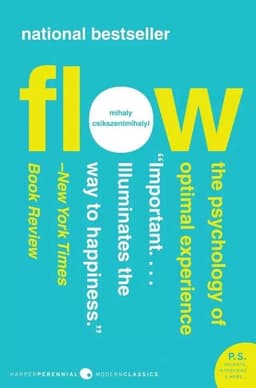
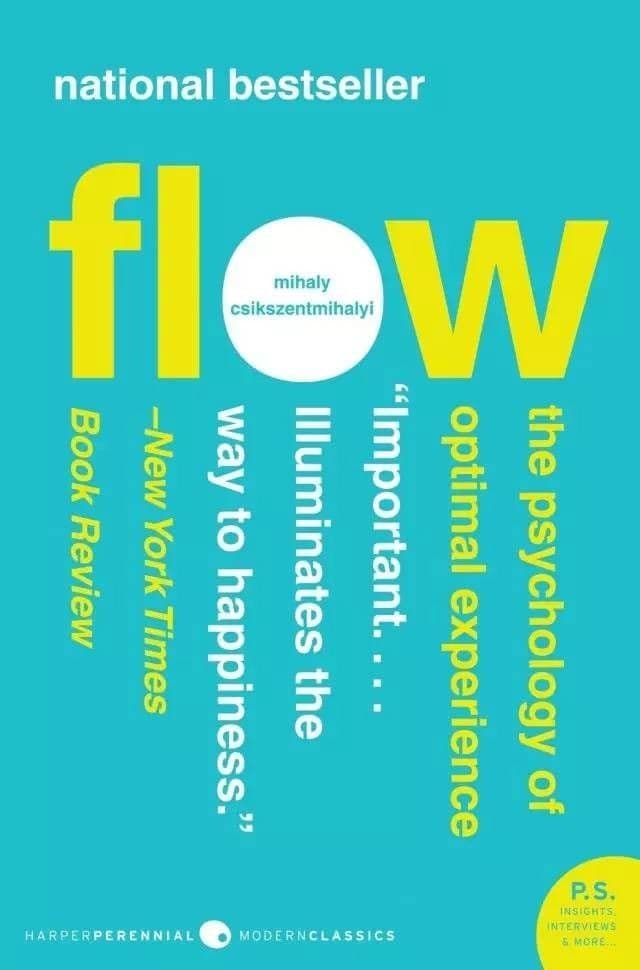
Flow Book Summary
Mihály Csíkszentmihályi
Flow reveals the secrets of optimal experience and shows how to transform even the most mundane moments into a source of enjoyment, creativity and meaning by learning to control consciousness itself.
Flow reveals the secrets of optimal experience and shows how to transform even the most mundane moments into a source of enjoyment, creativity and meaning by learning to control consciousness itself.
Psychology
Happiness
Productivity
Personal Development
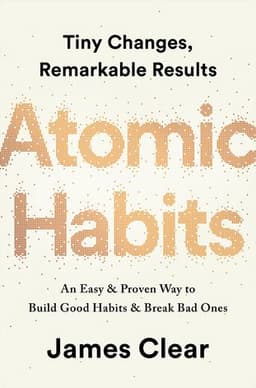
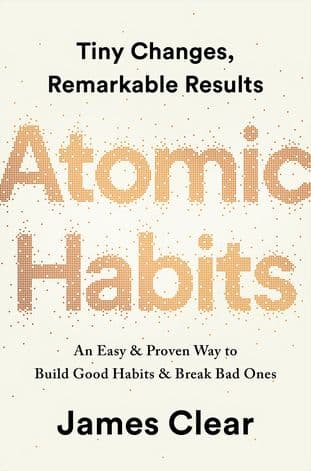
Atomic Habits Book Summary
James Clear
Atomic Habits reveals the surprising power of small habits, demonstrating how tiny changes can compound into remarkable results over time. By focusing on systems over goals and building identity-based habits, you can create lasting change and unlock your full potential.
Atomic Habits reveals the surprising power of small habits, demonstrating how tiny changes can compound into remarkable results over time. By focusing on systems over goals and building identity-based habits, you can create lasting change and unlock your full potential.
Productivity
Personal Development
Psychology

